HIDAMS Implementation: A Feasibility Study for Royal Adelaide Hospital
VerifiedAdded on 2023/04/10
|7
|1257
|70
Report
AI Summary
This report presents a feasibility analysis for implementing the Hospital Integrated Delivery and Asset Management Service (HIDAMS) at Royal Adelaide Hospital. The study examines the goals and objectives of the proposed system, including automating medical supply, expanding the system throughout Australia and Asia, providing controlled drug access, and ensuring efficient medication delivery. It describes the system's functionality, focusing on on-time medication delivery using autonomous robots, and highlights issues and constraints related to hospital compliance and technology integration. The findings suggest that implementing the project will reduce complexities in pharmaceutical product dispatch, and recommendations include preparing a technical team for system maintenance. The document references various sources, including Robotics Service Systems Ltd (RSSL) documents and Royal Adelaide Hospital documentation, to support the analysis.
1 out of 7


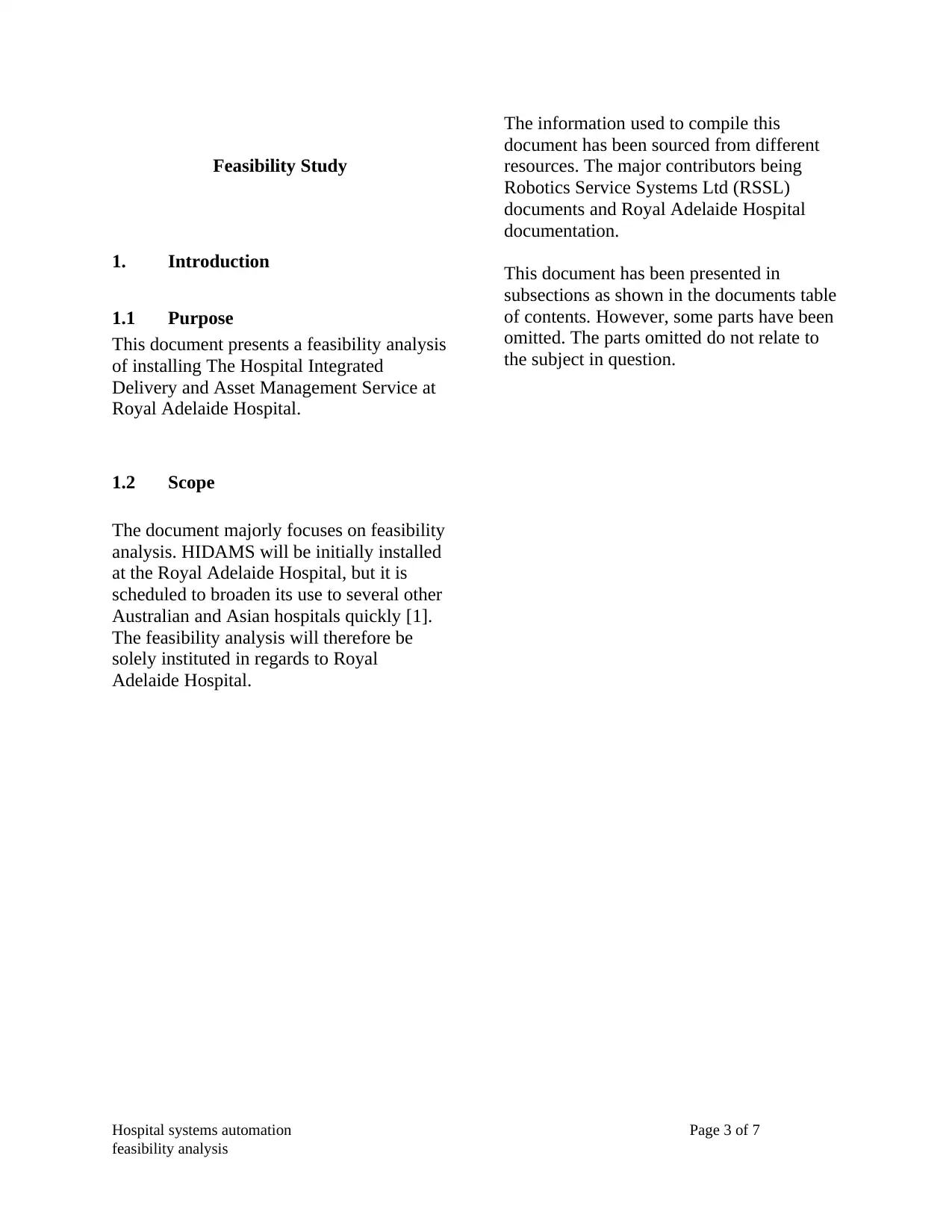
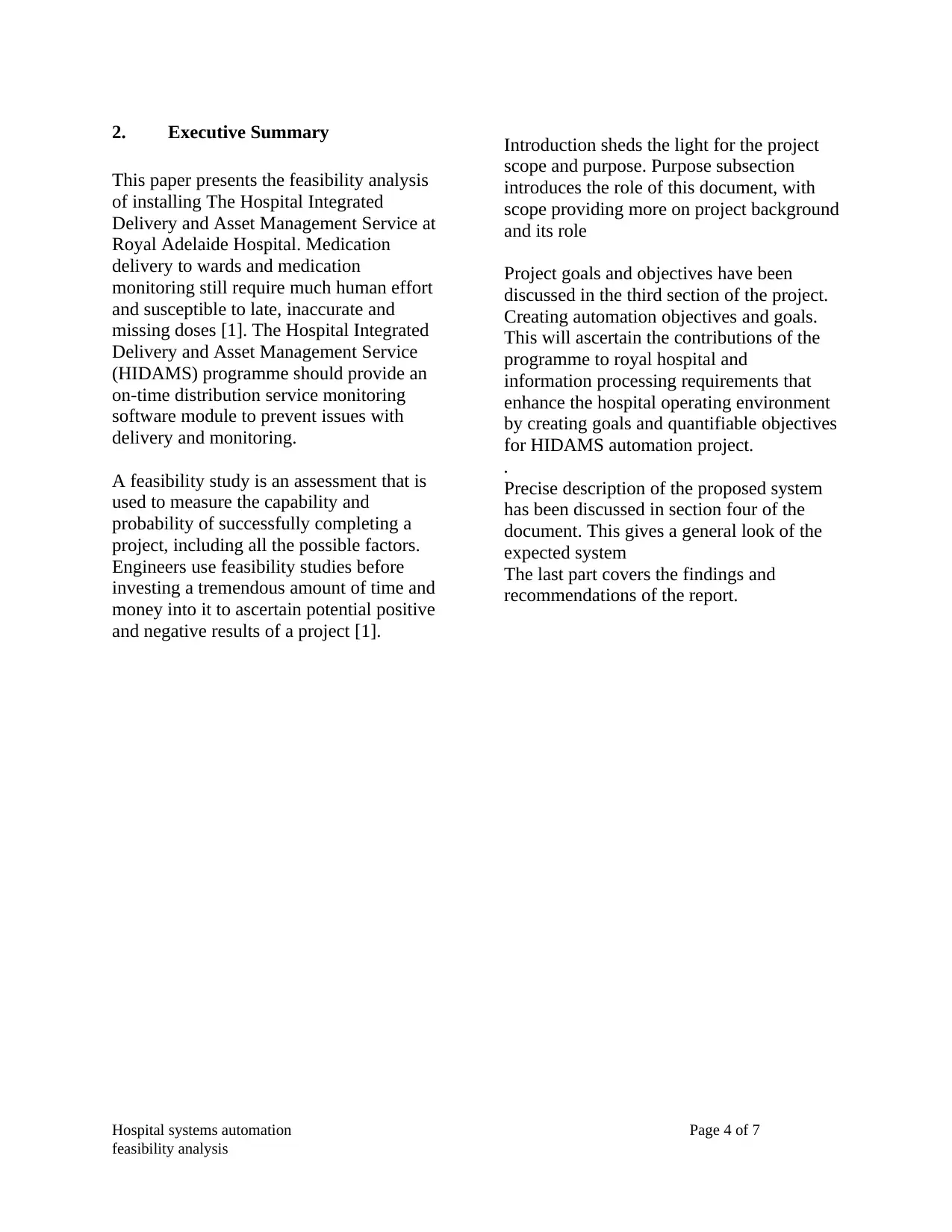
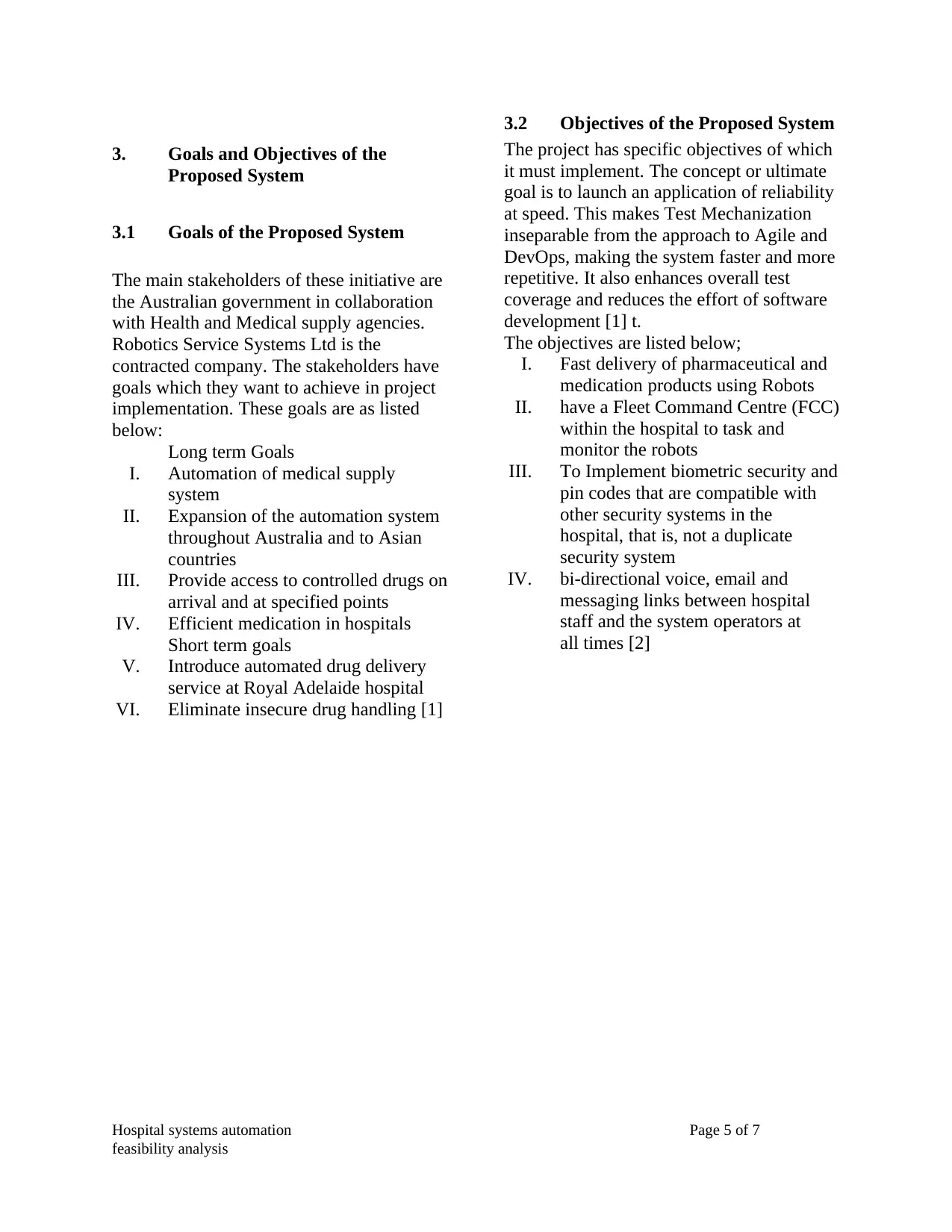
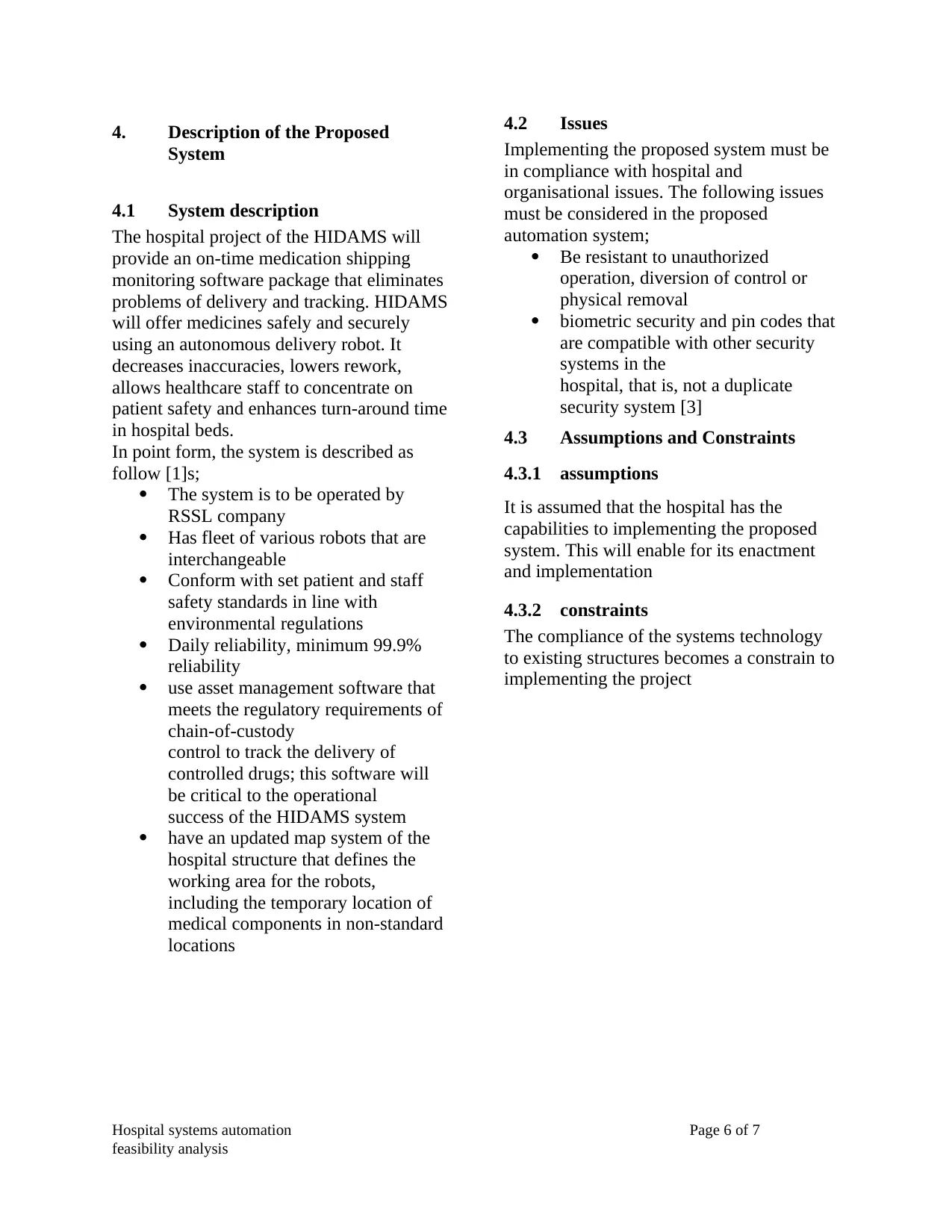
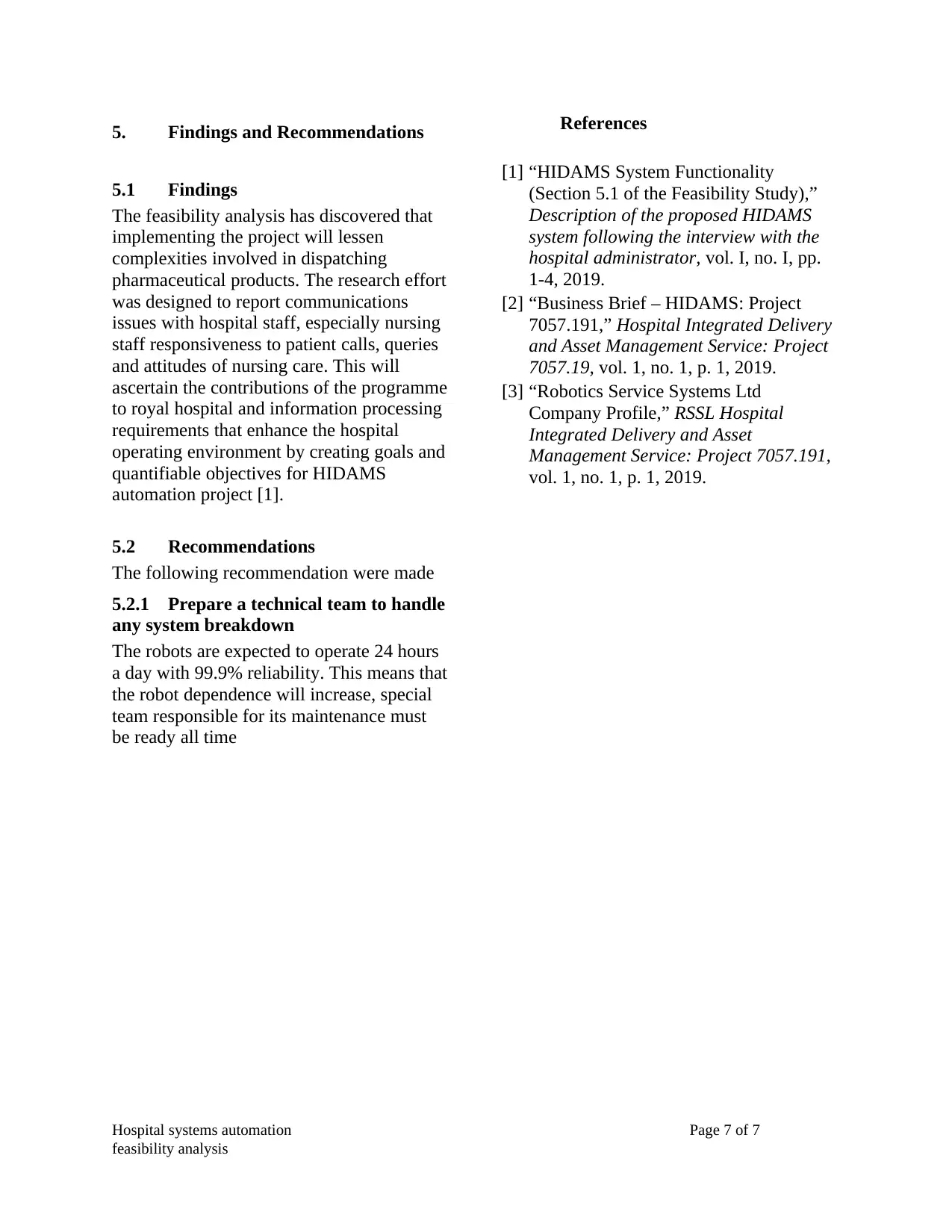






![[object Object]](/_next/static/media/star-bottom.7253800d.svg)